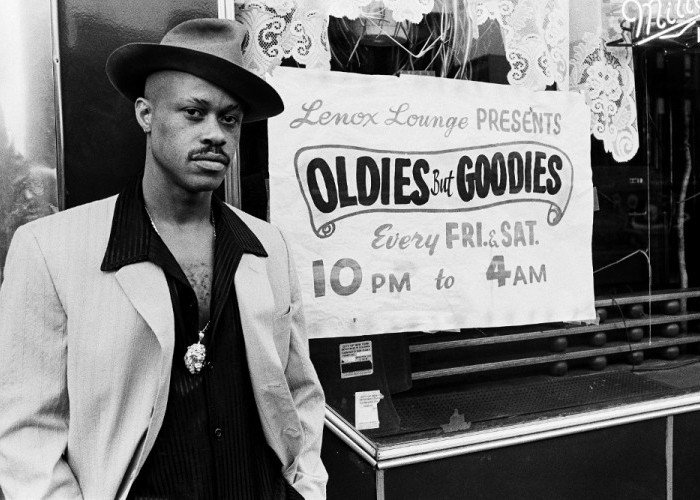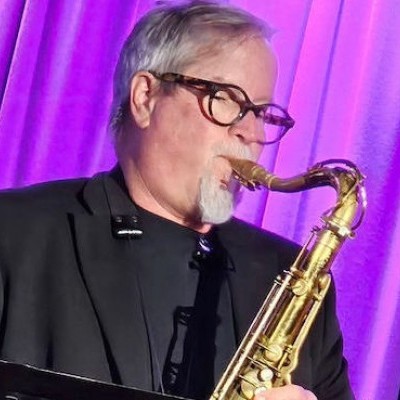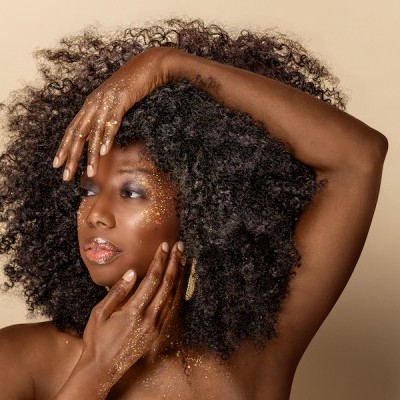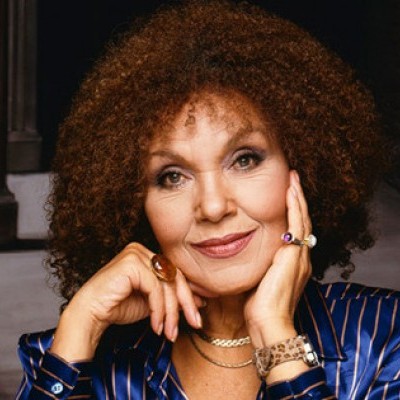Oct 28, 2025 10:47 AM
In Memoriam: Jack DeJohnette, 1942–2025
Jack DeJohnette, a bold and resourceful drummer and NEA Jazz Master who forged a unique vocabulary on the kit over his…

Guru (Keith Elam) issued four volumes of his Jazzmatazz project. The first installment marks its 25th anniversary this year.
(Photo: Thierry LeGoues)By 1993, advancements in the mutual appreciation between jazz and hip-hop reached a new level of creative oneness thanks to innovative groups like Digable Planets, The Roots, The Dream Warriors and Us3 tightening the knot that bound the two genres.
However, it was a recording by Gang Starr emcee Guru (Keith Elam) that broke down barriers between legendary jazz musicians and the artists who sampled them. Originally released by Chrysalis on May 18, 1993, Jazzmatazz, Vol. 1 found the late Elam—who succumbed to cancer in 2010 at 43—calling upon such giants as Ramsey Lewis, Donald Byrd and Roy Ayers to expand upon the seeds sown by A Tribe Called Quest’s work with Ron Carter on The Low End Theory from two years earlier.
“The record company called me because they had this concept where they were going to use a different artist on each cut,” explained Lonnie Liston Smith, who played acoustic and electric piano on the Jazzmatazz track “Down The Backstreets.” “They said to me how Guru was a big fan of my music and would like me to participate. I wasn’t doing anything at the time and the money was correct, so they flew me to New York and put me up in a hotel. When we went into the studio, it had worked. But the thing that blew my mind was how MTV went crazy. You know, MTV was never into jazz, but the guy on the channel was like, ‘Aw, man, this is history—rap meets jazz.’ Everybody in the music industry got all excited. It was really amazing.”
Jazzmatazz—which celebrates its 25th anniversary in the form of an Urban Legends three-LP box set that features instrumentals, remixes, B-sides and other rarities housed in a classy hardcover slipcase—also served as a quintessential vessel for young jazz talent of the early ’90s—Branford Marsalis, N’Dea Davenport and the late jazz guitarists Ronny Jordan and Zachary Breaux—looking to cross over.
“I first heard about Guru while working on a Spike Lee movie with Branford, who had talked about him and his work in Gang Starr,” said British saxophonist Courtney Pine, who appears on the album’s closing track, “Sights Of The City,” alongside vocalist Carleen Anderson. “At the time, there were a lot of us at a similar age talking about how we [could] get our music across to a wider audience. We wanted to figure out how to get our generation into those clubs. Branford and I would often talk about the problems of playing along with DJs, and both of us had albums with DJs scratching in the past. But then Guru came up with this idea from another angle. We were jazz artists trying to incorporate hip-hop, and here was a hip-hop artist sampling jazz by utilizing real jazz musicians.”
For Smith, the Jazzmatazz project embodied a historical connection, one tied to a story Guru previously had brought up with former Def Jam publicist Bill Adler in the album’s original liner notes: The Massachusetts-born rapper’s father and grandfather would sit him and his friends down in front of the family’s stereo and make them listen to jazz.
“Back in the day, when they had real record stores, you could go into a place like Tower Records anywhere in the world, go into their jazz section and find records you weren’t even aware of,” Smith said. “But then, we’d be in there and we’d look over and all the rappers, they’d be in the jazz section, and they’d be buying more jazz than we were. And when you talked to them, they’d tell us how either their mother or father, uncles or older brothers and sisters, when they were growing up, would be turning them on to jazz. Guru knew about all my albums; his favorite was Expansions.”
Granted, the first of four Jazzmatazz albums sounds very much of its time. And while the record might be beyond its expiration date, the framework it provided performers like J. Dilla, Madlib, Flying Lotus, Robert Glasper and countless others has made it a landmark recording.
“It’s an evolution and it just has to keep going, and we just have to be open enough to let it happen and be brave enough, which is what Guru was,” Pine said. “It was real camaraderie and an open-minded exploration of what could happen if you mix those kinds of people together.”
Smith espoused a related thought. “When we got to the studio, he was like, ‘Just go in and be yourself,’” he recalled. “And that’s what each of us did, and it turned out amazing.” DB

Jack DeJohnette boasted a musical resume that was as long as it was fearsome.
Oct 28, 2025 10:47 AM
Jack DeJohnette, a bold and resourceful drummer and NEA Jazz Master who forged a unique vocabulary on the kit over his…

“I’ve told students, ‘I don’t mind if you use AI for this or that project,’” says MIT’s Pascal Le Boeuf. “‘But you need to tell me.’”
Sep 18, 2025 11:14 AM
A standard joke when it comes to discussing artificial intelligence, or AI, is that it’s developing so rapidly that…

Chuck Manning Works for NASA … and plays jazz.
Sep 18, 2025 11:23 AM
Congratulations! After years of study, you’ve earned your degree in jazz performance. But let’s face it: Making a…

Gadabout Season developed over many months of recording sessions in Brandee Younger’s East Harlem living room.
Sep 16, 2025 11:52 AM
When she’s on the road, Brandee Younger enters a hybrid state of action and contemplation. Free of daily distractions…

Cleo Laine, 1927–2025
Sep 16, 2025 10:03 AM
The music world mourns the loss of three important artists from the realms of jazz, blues and beyond with the recent…